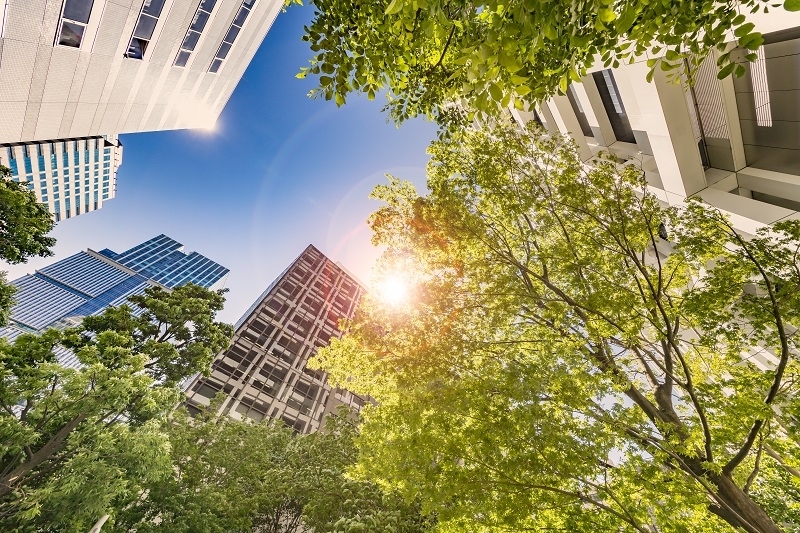How Timber Is Being Used to Decarbonise Our Cities
Published: 03/08/22 By: Mike Bekin
Have you heard of an urban jungle? In Western countries, it is not too common to see flourishing forest life in the middle of a city. But the concept of an urban jungle is becoming something to which we all need to pay more attention, with governments looking at how to create greener cities to tackle climate change. If you are ready to learn more, our team at EcoChoice have done some digging into the various ways timber is being used to decarbonise our cities.
Why Do We Need to Grow Trees in Cities?
Currently, in London, two million people are living in areas with toxic air. These areas exceed the legal limit for air pollution, with many toxins and gases being inhaled by residents daily. The health consequences of that will not be good, to say the least.
This is not just in London, either. Cities around the world are notable for having awful air quality because of industrialisation, traffic and a lack of green spaces. In other words, a lot of toxins are being produced and there is nothing there to absorb them.
How Can More Green Spaces Help?
This is where urban jungles and green city spaces come in. Trees are like filters for our air, trapping the nasty particles in their leaves and soaking up CO?, storing it in their bark. The more trees we have in cities, the better the air quality will be.
It will also help mitigate the effects of industrialisation and our CO?-producing activities, with a huge range of other benefits including free shade and lower flood risk. One day we may even plant enough trees to decarbonise our cities, meaning that the forests will absorb as much CO? as the city produces.
Planting more trees will also help reduce deforestation in fragile ecosystems, such as the Amazon. The world’s natural resource of timber will go up and the strain on other forests will go down. It’s a win-win all around!
Which Systems Are Being Used?
There are a number of ways that more greenery is being introduced into cities. Gardens are being grown on the roofs of buildings, trees are grown in the streets and living walls are being added to buildings.
The idea at the moment is to increase the ethos of “wherever we can, let’s add green!”. But there are also some more scientific methods being used cleverly to increase natural spaces in densely populated urban areas, for example the Miyawaki method.
What Is the Miyawaki Method?
The Miyawaki method was created by Japanese botanist Akira Miyawaki as a way to promote afforestation in small spaces. To create a Miyawaki forest, you need only 4 metres by 3 metres of space! Although, of course, the more land you have to plant, the more beneficial the forest will be.
The method works by planting a large variety of native species closely together. By planting them so closely, there will be more competition for sunlight so the trees and plants will grow straight up rather than sideways. This creates an incredibly dense, biodiverse area of forest that grows ten times faster, is completely maintenance-free after just three years, and absorbs 30 times more CO? when compared to a conventional forest.
For cities, the idea is revolutionary. Entire forests can be squeezed into the space of a garden, with varied plant species supporting varied wildlife. At EcoChoice, we think this might just be the answer to decarbonising our cities.
Learn More About Timber and Its Role in Our Environment
Our team at EcoChoice are super passionate about both timber and the environment. If you would like to learn more about how sustainable forests and responsibly sourced timber can help our planet, be sure to check out more on our blog! Or if you have any questions about how you can use sustainable timber in your construction projects, get in touch with our team today.
Image: taka1022 / Shutterstock.com
Tags: Environmental, Sustainability, Timber
Categories: Insights
